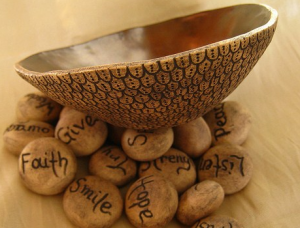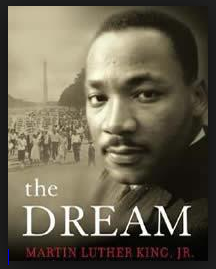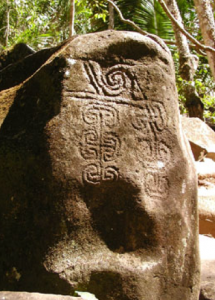Jake Eagle's Blog, page 15
November 22, 2013
The Keys To Aging Well
 The first key to aging well, —start now!
The first key to aging well, —start now!Is this important to you? Do you want to age well? You should—because aging poorly is a real drag. And unnecessary. In this article I’ll share with you some results found in The Study of Adult Development. This is a unique study because it looks at the lives of the well, not the sick.
This study includes socially advantaged Harvard graduates, socially disadvantaged Inner City men, and middle-class, intellectually gifted women. All of these people were born early in the last century and have been studied for almost eight decades. This is the longest prospective study of physical and mental health in the world.
Successful Aging
Some people say that “successful aging” is an oxymoron, because the common conception of aging is that it represents decline, pain, and suffering, whereas the common conception of success is one of winning and vitality.
But the fact is that the majority of older people, without brain disease, maintain a sense of modest well-being until the final months before they die. Not only are the old less depressed than the general population, but also a majority of the elderly suffer little incapacitating illness until the final one that kills them. No, successful aging is not an oxymoron.
So, what are the keys to aging successfully? It is clear from The Study of Adult Development that the people who age well are continuously re-inventing their lives. One man in the study used the metaphor that life is like a book, and when one chapter is completed we must turn the page and start the next chapter. This reminds us, even when life is hard, to keep focused on why we want to keep on living.
Here are some interesting findings from the study:
It is not the bad things that happen to us that doom us; it is the good people who happen to us at any age that facilitate enjoyable old age.
Healing relationships are facilitated by a capacity for gratitude, for forgiveness, and for taking people inside. (By this metaphor I mean becoming eternally enriched by loving a particular person.)
A good marriage at age 50 predicted positive aging at 80. But surprisingly, low cholesterol levels at age 50 did not.
Alcohol abuse—unrelated to unhappy childhood—consistently predicted unsuccessful aging, in part because alcoholism damaged future social supports.
Learning to play and create after retirement, and learning to gain younger friends as we lose older ones, add more to life’s enjoyment than retirement income.
Objective good physical health was less important to successful aging than subjective good health. By this I mean that it is all right to be ill as long as you do not feel sick. *
I find the results of this study to be very reassuring. And when I read the results I think of John and Joyce Weir—our mentors who created the original body of work behind Reology. They were a picture of successful aging. And, it’s no coincidence that they lived a “reologic” life. Here’s how I see the Weir’s in relationship to the above list:
They never acted as if bad things happened to them, instead their focus was on how they responded to whatever happened in their lives. In other words, they never felt like victims. So I would say that feeling empowered is one key to successful aging.
They demonstrated that it’s much easier to create healing relationships when we stop victimizing ourselves. And we are more capable of “taking people inside”—really loving a particular person—when we aren’t trying to control them or feeling controlled by them.
They had a good marriage at 50, at 80, and at 90. I don’t know what their cholesterol levels were, but based on John’s love of mud pie I can imagine his was fairly high.
They never truly retired. When we met the Weirs they were actively teaching their workshops. They were 85-years-old. And as far as forming younger friends, I believe that is the role we played in their lives.
They enjoyed subjective good health—even though their bodies were letting them down in various ways on a daily basis.
Sex and aging
And, I’ll add one more thing to the list—it’s not in the study—that I learned from John and Joyce Weir. They enjoyed sexual vitality well into their eighties, which I believe contributed to their subjective sense of good health.
In our articles and teachings we often suggest that Reology is a good way to find your purpose in life, find a healthy partner, and improve the romantic partnership you already have. This is because when you stop caring so much about what other people think, and when you stop blaming others for your emotions, and when you start living in the present—you deeply increase your potential to be healthy and happy.
In this article we’re adding something. We are saying that Reology is a good way to ensure that you age successfully. What can be more important?
Really? What can be more important?
Are you counting on having good genes? Did your parents age well? Were they re-inventing themselves in their eighties? Were they eternally enriched by loving a particular person? Were they learning to play and create after retirement, gaining younger friends? Were they thinking of themselves as having good health late in life?
Even if they were—most of these traits aren’t inherited.
These characteristics—empowerment, loving well, being a good partner, playfulness, and subjective good health—are developed as a result of certain practices and mindfulness. If this is what you want in your life, come join us at our next Reology Retreat. We guarantee you’ll age better as a result.
* This list comes directly from The Study of Adult Development and George Vaillant’s book, Aging Well
The post The Keys To Aging Well appeared first on Reology.
November 15, 2013
The Two Best Affirmations
 I question the idea that all I have to do is repeat a few select affirmations and my life will change for the better. Actually, I don’t buy it.
I question the idea that all I have to do is repeat a few select affirmations and my life will change for the better. Actually, I don’t buy it.
I recently read an article in Elephant Journal that describes the positive effects of “Trite, New-Agey Affirmations.” In the article the author explores extensive scientific evidence showing the power of positive language, how it affects the neurons in our brains and that with repetition we can create a dopamine effect.
I can’t argue with the research because it agrees with everything else I’ve read about the plasticity of the brain and it’s ability to affect how I live my life based on what I think and say. Nor can I argue with the incredible effects of dopamine—anyone who has run a long distance, ridden a bike, done a challenging workout or had a spiritual experience can deny the overwhelming sense of relaxation and peace that comes with a dopamine rush.
But . . . do affirmations work?
What I do question is the idea presented in the article that implies that all I have to do is repeat a few select affirmations and my life will change for the better. I question that because I have heard it so many times and have seen the same unhappy results.
The first time I heard about “affirmations” was in the late 80’s. The first one I heard was, “Every day in every way, I am getting better and better.” What bothered me when I heard it then was what if I am a criminal or a child molester or a porn distributor? Will repeating the above affirmation make me better at whatever job I do? I thought the statement was seriously lacking in critical details.
Since then, I never really paid much attention to the idea that affirmations can actually change my life. I think I’m deeper and more complex than that. I felt the same way when I was introduced by a well-meaning therapist to a pocket size book of inspirational thoughts. You’ve seen them in the self-help section in every bookstore—Women Who Love Too Much, Co-dependent No More, The 24 Hour A Day Book—books designed to help me stay on the path of spirituality and guide me back when I falter.
I tried using those books, but again, I found them to be shallow and smug for the most part. The idea that reading a sentence or two of inspirational thought and then a paragraph explaining how these words can carry me through the day felt insulting and dishonest.
Do affirmations encourage denial?
One of my problems is I have a habit of denying what I am truly feeling or thinking. I was raised to keep my mouth shut and smile regardless of what was going on. As a result I grew up confused, angry, frustrated and disconnected from myself. When I sought help in my early thirties and was given a book of trite affirmations it felt like I was being re-abused.
A few days after I read the article in Elephant Journal I found the perfect example of a trite and dishonest affirmation. It was posted on my Facebook page by one of my many good intentioned acquaintances.
You have a clean slate every day you wake up. You have a chance every morning to make that change and be the person you want to be. You just have to decide to do it. Decide today’s the day. Say it: this is going to be my day.
I understand that the intention is to help me feel encouraged, braver and more positive about myself. But I question the simplicity; are we humans that easily changeable? And if we are, why don’t alcoholics get sober after reading the “24 Hour A Day Book?” Why don’t co-dependent spouses leave their abusive partners and find healthy loving relationships after using “Co-Dependent No More?”
There seems to be a hidden implication in these books and affirmations that I find extremely discouraging, much like diets. The regimen is described—read this, say this, meditate on this or eat only these foods and you will find success. They often go as far as to guarantee that if you follow these steps, or if you use these affirmations for the prescribed amount of time you will be, happier, thinner, healthier or more sane. But what happens if I don’t succeed?
“I’m a great gal!”
I’ve never found a diet that did what it proclaimed to do. I never succeeded in raising my self-esteem by telling myself I was a great gal and deserved all the best in life. The idea that I can make my life different by merely making a decision that “today is my day,” seems silly and dishonest to me.
And the hidden implication is clear: If I were a more developed, more spiritual and better person then making that decision or following the diet would have worked. Clearly the reason I failed is because I did something wrong, which takes me right back to my ancient thinking of “there is something wrong with me.”
Warning label
So, while I do not disagree with the scientific research in the article, I think it should come with a strong warning. I think we are fascinated with the idea that there is a quick fix to our pain and an easy solution to our disconnectedness. I think that we are so accustomed to making dinner in 5 minutes we think we should be able to create lasting peace and happiness by using affirmations for 5 minutes in the morning.
I would offer a deeper solution. I would suggest that nothing heals deep pain but deep work. I would suggest that until we release the notion of the quick fix we are going to continue to be deeply dissatisfied in some parts of our lives. I would also suggest that by ignoring ourselves and our deeper emotions we are doing ourselves and our children a terrible disservice
We are raising our children in a world that lies to them about the nature of their minds. What we are feeding our children and our future leaders is the lie that a yoga class and some organic beef are enough to solve their unhealthy habits. We are teaching them to trust in the fancy packaging at the health food store, rather than sit and listen to their own hearts. We are teaching them that simply making a decision to be a better person is all it takes to build character. And if we are teaching our children this then on some level we are trying to believe it ourselves. I would suggest that given the state of the world, the “instant fix” is an insufficient solution and I would encourage us all to seek deeper solutions to our problems.
Deeper answers
I would encourage us all to make more time and investigate real solutions. Get into therapy, do a ten-day meditation course or attend a spiritual retreat. Send your kids to Outward Bound for two weeks instead of tennis camp. Better yet, go with them; find out who they are away from the TV and the Internet.
We live with a distorted sense of time. We spend hours each day in cars and in buildings breathing recycled air under artificial lighting. We spend our lives in our heads rationalizing our behavior and arguing with ourselves. We think we’ll have time to work on ourselves next weekend, next summer, next year. The truth is we’re all dying slowly and now is the moment to act. Now is the time to find a real solution to whatever is causing us pain.
So, let me suggest this affirmation:
I am a deep and complex person and it is worth investing the time and energy required to heal myself and grow myself.
I have found a practice that works for me and I see it working for a growing community of people. I do not think it is the only practice, but I think it is a powerful and self-respecting practice. Reology is my practice and if you are interested I encourage you to investigate. I encourage you to delve deeply into any spiritual practice which brings you liberation from old ideas. I encourage you to find a way of living that creates richness and joy and a continuous sense of wonder.
My final affirmation:
My life is what I make of myself—moment by moment.
The post The Two Best Affirmations appeared first on Reology.
November 8, 2013
Forgiveness Is Not An Option
 Please forgive me.
Please forgive me.I am sorry if anyone offends themselves, but I’m going to be controversial. Most everything I read these days says that we must forgive those who have harmed or offended us. I don’t agree, not if they haven’t apologized.
A wise man once told me that true forgiveness is not something you can do. It is something that happens as a result of something else happening. I actually think he was right. Forgiveness is something that can happen after a heartfelt apology is made.
At a recent Reology gathering, we showed a remarkably moving TED Talk by Joshua Prager: “In search of the man who broke my neck.” Joshua shares the tale of his search for the reckless man, Ahmed—who had 26 prior driving violations—before plowing into Prager’s car and causing so much damage.
Joshua was severely disabled by this event and another person was killed. Many years later Joshua searched for Ahmed in order to receive two words: “I’m sorry.” Not only did Ahmed not apologize, but he complained of his own minor and non existent injuries, and he had conveniently condensed his 26 driving violations and this reckless accident into a one time speeding incident.
After hearing Ahmed’s complete distortion of what happened, had Joshua chosen to forgive Ahmed, I would have been dubious. And I probably would not have been as profoundly touched as I was by what he actually did do with his unfulfilled need for an apology.
Compassion yes, Forgiveness no.
Joshua, for his own healing, found compassion for Ahmed’s ignorance, his inability to be accountable, and his unexamined life. Joshua found compassion not forgiveness because there was no acknowledgment, nor apology coming from Ahmed.
Sometimes I believe that the popular idea of “forgiveness” ends up encouraging repression or is a naïve ideal we are told we must fulfill, something we think we “should” do for ourselves and others. For me, inappropriate forgiveness may plant the seed for denial.
A patient of mine recently shared that she had long ago forgiven her father’s betrayal, being molested numerous times by him beginning at the age of nine. She explained that she was “a very forgiving person.” My perception was that her excessive alcohol consumption played a big part in her ability to forgive the unforgivable.
Parents are supposed to protect their children. And they are fully aware of that. If they are abusing their kids, they are doing it consciously. And conscious crimes, to me, are the most unforgivable. And if there is no sincere apology, I believe, forgiveness is not an option.
Unresolved feelings surfaced from time to time for this woman, but they were quickly repressed with a nightly bottle of wine. She could not bear her father’s rejection, even as an adult, so it was easier to repress and minimize the abuse than to confront her father. The subject never came up and he never apologized. If feelings arose, she would numb herself accordingly.
Flexing our apology muscles.
Even with way less serious offenses, I amaze myself with how difficult it can be to say two little words: “I’m sorry”. But, sadly, being held accountable, admitting that we’ve made a mistake, is more than some of us can handle.
Were we to know how much better we’d feel after expressing those two words, we might step up to the challenge more often. Certainly with practice, this becomes easier.
I propose that we apologize for anything in our past and be prepared to apologize in the future—begin flexing our apology muscles. The healthier we are the less willing we will be to spend much time with someone who cannot say they’re sorry; but we can still feel compassionate toward them because we understand how difficult it can be to say we’re sorry, particularly when we ‘re unpracticed.
In Reology we get good at examining our lives and learning to appropriately Redo ourselves. In this practice we take blame out of the equation and thus, eliminate the sting of using those two words, “I’m Sorry”.
I’m sorry, but forgiveness is not an option for me if “I’m sorry” does not come first.
The post Forgiveness Is Not An Option appeared first on Reology.
November 1, 2013
Virtual Questions Guide Our Lives
 This summer I attended a week long Reology Retreat or “Lab” as we call them, hosted by Jake and Hannah Eagle. (We call the retreats a “Lab” because it’s a place to experiment and learn new ways of being.)
This summer I attended a week long Reology Retreat or “Lab” as we call them, hosted by Jake and Hannah Eagle. (We call the retreats a “Lab” because it’s a place to experiment and learn new ways of being.)
I changed my life.
To say that the Lab changed my life is true and it is also an understatement. As a result of the Lab and my continued connection with the Eagles and my Lab mates, I continue to learn and grow myself and I delight in my progress.
One of the perks of attending a Lab is the deep connection I formed with my Lab mates and in order to nurture that connection I signed up for the bi-monthly conference calls, also hosted by the Eagles. Every Sunday evening several of us take an hour to reconnect and remind ourselves of the power of living in the Reology orientation.
Hidden forces in our lives.
In one of our conference calls Jake talked about Virtual Questions. Virtual Questions, Jake explained, are unconscious questions we ask ourselves that greatly determine how we live—but unless we seek to discover what our Virtual Questions are they remain hidden forces in our lives. He then suggested ways we could examine our own Virtual Questions and their effect upon our lives.
One of us participating in the group discussion acknowledged having trouble with intimacy. He described his Virtual Question as, “How long am I going to hide myself?” During the call Jake shared a story about a time when he was feeling the urge to withdraw his energy from his family members. As he became aware of his urge to shy away from his family he changed his virtual question to, “How generous can I be?”
He had switched his question from “How much (of this family stuff) can I take?” to “How generous can I be?” And in that simple shift he changed his approach. He shifted his attitude and his experience with his family became different. He behaved like the man he wants to be. And as a result he felt better about himself.
After the group discussion I thought about my Virtual Question, but I didn’t give it much effort. I avoided the topic because I didn’t feel clear. Today, looking back, I realize I was uncomfortable with the subject—so I put it on the back burner and went on with my life.
I didn’t think about Virtual Questions again until today, when I read an article written by Jake in Elephant Journal. In the article, he explains more about Virtual Questions and how to formulate them to empower ourselves rather than continue to engage in behavior that keeps us powerless or no longer serves us well.
Will you allow yourself to discover your Virtual Question?
After reading the article I closed my eyes, took a few deep slow breaths and asked myself “What is my Virtual Question?” And the answer floored me and I laughed out loud. My Virtual Question is ancient—and it is: “How Do I Get Out of Here?”
Wow. Really? Yes, really. No wonder I have been so unhappy no matter where I am or what I am doing! I am laughing as I write this because my question describes the tone of my life for the last 55 years. “How do I get out of Here?”
Well, that’s one hell of a question, and when I stop laughing I begin to really feel how sad and lonely that girl was that formulated that question. I have lived my whole life looking to get out. Escape, Run, Avoid, Leave, Go.
I believe the effects of my Virtual Question have tainted and motivated everything in my life. I have been restless, antsy, itchy and anxious as long as I can remember. I grew up feeling unsafe and unwanted and I continue to live in those feelings because my Virtual Question has not changed. Until now, until today, Oct. 30, 2013.
Today my Virtual Question is: How much peace and beauty can I find in each day? When I write that I feel myself soften and I feel like there is a pool of warm honey inside me. I overwhelm myself with gratitude that I still have time, I have the opportunity and willingness to change. Despite my anxiety and despite my terrible stories I can choose to live a life of peace and beauty because I can change my perspective.
My ongoing work with Jake and Hannah and the Reology community is about integration and choosing to live with more integrity and impeccability. I can do this now because I don’t victimize myself the way I used to. I don’t hurt myself with my past anymore. And today I will cease tainting the present and the future with anxiety and insecurity because I am changing my Virtual Question.
I imagine that with my new Virtual Question I’ll be more successful at meditation, happier in my work, feel more grateful in day-to-day living and slower in all my movements. And because I am asking to find more peace and more beauty I will see it everywhere. I will find it within and without, in your eyes and in mine and I’ll cease feeling so anxious.
Can it be this easy?
One of the things that I continue to amaze myself with is the simplicity of the act of transformation. In the few minutes it took for me to read Jake’s article, find my old Virtual Question, create a new one and write this blog, I have changed myself. My old Virtual Question will never have the same affect on me as it did before. I have a new question that is congruent with who I am. My old question doesn’t belong to the woman I’ve become, it is a relic from the past. An unnecessary weight I carried for much too long.
I’ve always been a lover of language. I love books and poetry, I love to write and I love listening to the many languages I hear daily in the magnificent city of Toronto. I love where I live, but I have never been able to fully be here because of my old Virtual Question. I imagine that when I leave my apartment to see my client this afternoon, I’ll feel differently about this city of mine. I will embrace it and rejoice that I live here, because I’ll be looking for more peace and beauty—not an escape hatch.
Jake recently said in his Dating, Relating and Mating video course, “Love is easy.” Well, so is change, and growth and self-transformation. When I change how I speak, when I change the conversation, I transform how I perceive the world. And today mine has moved from a world of insecurity and anxiety, to a world of more peace and beauty.
Please learn about Reology, please come find a new conversation.
The post Virtual Questions Guide Our Lives appeared first on Reology.
October 25, 2013
Healing Yourself by Integrating Yourself
 In Reology we hear a great deal about integration. The definition of integration is: to combine, amalgamate, merge, unite, fuse, blend, incorporate. The antonym of integration is separation.
In Reology we hear a great deal about integration. The definition of integration is: to combine, amalgamate, merge, unite, fuse, blend, incorporate. The antonym of integration is separation.
When we live a more integrated life we experience greater equanimity, harmony and balance.
So the question is “how do we integrate ourselves?”
We talked about this at the last Reology Retreat or “Lab” as we call them. What stood out for me was a metaphor called the River of Integration. The River of Integration paints a picture in which the left bank of the river represents the extreme of rigidity and resistance to change, while the right bank represents the extreme of chaos and feeling overwhelmed. And in the middle of the river—that’s where we flow in acceptance, presence and love.
If we come from the rigid side or left bank of the river, we tend to be controlling, obsessive, disconnected from our feelings, overly attached to our beliefs and as a result, defensive. If we spend more time on the chaotic bank of the river, then we are probably more scattered, overly sensitive, easily overwhelmed and more easily re-stimulated. Living in either extreme is problematic and challenging.
The solution to living in either extreme is awareness and acceptance followed by integration. We begin with awareness of aspects of ourselves that are not integrated, and only after we accept these aspects, or parts, or behaviors can we integrate them.
For the last year I have been working closely with Jake and Hannah, the founders of Reology. One of the main focuses of my work with them has been to become aware of and accept all the different parts of myself. Because of my history, one of the ways I coped with growing up was to separate myself or compartmentalize aspects of myself that were not acceptable to the adults in my life when I was a child.
Like many of us I was not allowed to show my anger. Nor was I permitted to be sad or depressed.
Children were expected to be seen and not heard, to be cheerful or be silent. The fundamental message was keep your head down and don’t rock the boat.
As a result of these messages I learned quickly to deny, repress and hide parts of myself while growing up, only to have them erupt in my adolescence. In my teenage years I became rebellious and outspoken and left home at an early age. I spent most of my youth bouncing between both extremes or banks of the river.
The first step of my healing began with awareness and acceptance. I admitted to myself that I was struggling and stopped denying that I was having a hard time. I stopped trying to pretend I was “fine” and decided I would treat this stage of healing as a process of discovery.
What I found in being honest with myself was the grace to move forward.
And in that grace I found patience and a sense of curiosity. Who were these parts of me I had been hiding since childhood? How would I be if I allowed them out in the open? What would they say if I allowed them to speak?
The first step was noticing that when I overreacted in any situation it meant that a hidden part of me was activated.
I began to notice that sometimes the smallest annoyance would trigger feelings of real anger. Or, I would watch a sad movie and be consumed with sorrow and grief. I began to understand that when my feelings were out of proportion to the situation I was dealing with a repressed part of me. When this happened I made every effort to allow that part of me to explore whatever feeling had arisen.
I did this with integrity and intention. I allowed the angry part of me to express her anger in a safe environment, I didn’t vent at work or take it out on a stranger. I allowed my depressed part to feel miserable for a specific amount of time, a day, half a day, an hour, 15 minutes, 1 minute. I let the tears flow when I was home alone and had the privacy I needed to fully collapse into my sadness and then took a shower and got back to my life.
I chose to embrace these parts of me in a mature and responsible manner. I challenged myself to work with myself as I would a client –with integrity, boundaries, compassion, and honesty. I didn’t overwhelm or indulge myself—I set limits and expectations and the results were extraordinary.
The second step involved giving the hidden parts of myself time and attention.
When I felt frustrated and wanted to rush I slowed down. I breathed deeply and felt what frustration felt like in my body. Where did it live, what sensations accompanied the feeling? I ceased judging the parts of myself and just let them be. I acknowledged that I had stuffed many feelings as a kid and didn’t expect a quick fix. I decided to proceed as if I had all the time in the world and I practiced sitting still. When I slowed myself down I learned to cultivate compassion for myself regardless of what I was feeling.
The third step was giving expression to whatever I felt.
I gave each of my hidden parts a voice and allowed them to say and feel whatever had been denied them in the past. I wrote, I painted, I sang and I danced. I worked out and I sweated, I wept and I cursed and when I was sated I rested. And I did this until I felt empty. I arrived at a point inside myself where the stories stopped. I found myself no longer needing to talk about the past and what had happened. I felt empty of “then” but filled with “now.”
The fourth step is where I develop my mature voice.
To fully integrate the different parts of myself, it wasn’t enough just to allow each part to express itself; they needed to express themselves appropriately.
In the process of acknowledging and embracing all of me I discover that I need my anger, my sadness and my depression. They are part of what makes me, me. They are as important as my happiness, my joy and my compassion. I learn to express my emotions, to embrace all parts of me without overwhelming myself and without living on either of the extreme banks of the River of Integration. As I am no longer living in the past I can respond consciously and appropriately to the impact of the world.
I’ve found that the process of integration is ongoing for me and I discover parts of myself in a myriad of ways. Because I’ve developed compassion for myself and treat myself with respect and kindness, I find I delight in working with all me. I had a dream recently that illustrates one way my parts reveal themselves and how I have learned to work with them to bring myself to deeper integration.
In the dream three women were attacking me. It felt like a prison movie. Three angry, controlling, older women were chasing and attacking a younger part of me. In the dream, I fought them off but I knew I was going to lose. Eventually I escaped and ran away, and then I woke up.
I wrote the dream down and then I translated it into ReSpeak, which is the language of Reology. When I use ReSpeak I take full responsibility for myself– my actions, my feelings and my thoughts. In my translation I discovered that the three women attacking me were parts of myself that I haven’t integrated fully and they were based on faulty beliefs about myself. Beliefs that were keeping me stuck in the victim role.
I was raised by an angry woman; a woman who lived her life believing she was a victim. Her definition of herself as a woman was that of a victim. In my personal work I have come to the conclusion that one of my core beliefs is that as a woman, I too am a victim
However, as my dream suggests, I am not a victim because of the way of the world. I am not a victim because all women are victims. I lived most of my life as a victim because I was treated badly as a child. I was a victim in the past and I kept that identity because I learned how to victimize myself.
As an adult I have a choice as to how I define myself. I create my identity by how I think about myself and what actions I take.
With the help of Reology and ReSpeak and the River of Integration I learn to re-create myself by taking responsibility for myself.
As I worked through the dream I followed the four steps: I accepted that parts of me are angry and critical of other parts of me. I accepted that parts of me still carry my mother’s beliefs. I thought about how limiting and hurtful that has been and I let myself feel the sadness and loneliness of being that young girl who had to run away from her mother. I gave her a voice and I listened.
And as I listened to that younger part of me I realized I’ve changed what I believe about myself. I no longer believe I am a victim, or that being a woman makes me weak or powerless. I’ve created new beliefs for myself, I believe I am compassionate and loving, powerful and beautiful and I believe I am fluid and evolving to a deeper union within myself.
With the help of ReSpeak and Reology I continue to practice the art of integration. I live in a kinder and more gentle world today because I am connected with myself and I live in the moment. As a result of integrating myself I don’t have parts of me that are living in the past. I don’t spend countless hours thinking about how “they done me wrong.”
I have embraced, nurtured, given voice to and matured my inner children and I live today, in the present—NOW is a powerful place to live.
The post Healing Yourself by Integrating Yourself appeared first on Reology.
October 18, 2013
I Never Step In The Same River Twice
 For nearly ten years, I was a student of meditation. Two or three times a year I immersed myself in the practice, for week-long intensives. Before each new Zen ‘sesshin’, as they were called, or Vipassana retreat, I struggled with whether to take the time out of my life, my work, and parenting, diminish my bank account, and push myself to grow further, or to simply stay in my comfort zone at home. Didn’t I already know how to meditate? Didn’t I just need to place my toosh on the zafu?
For nearly ten years, I was a student of meditation. Two or three times a year I immersed myself in the practice, for week-long intensives. Before each new Zen ‘sesshin’, as they were called, or Vipassana retreat, I struggled with whether to take the time out of my life, my work, and parenting, diminish my bank account, and push myself to grow further, or to simply stay in my comfort zone at home. Didn’t I already know how to meditate? Didn’t I just need to place my toosh on the zafu?
These meditation intensives were usually difficult for the first few days. My knees and back hurt, I exhausted myself getting up at 4 am. I made myself nervous, and frustrated myself going in to see the Roshi three times a day to answer the seemingly senseless question or koan. And though the structure was the same (get up in the dark, go to the zendo, have tea – sit – chant – sit – walk – sit – see the Roshi – sit – eat – sit (and that was just the morning), not one of these days or weeks was ever the same.
Each sitting was unique. If one sit was euphoric I would often go into the next sit with expectations of another euphoric half hour, but the next sit would inevitably be completely different from the last. At the end of each of these intensives, I was a different person from the one who had walked into the zendo at the beginning of the week.
After each meditation training I would practice diligently for a while and then my commitment to the practice would fade.
For the past ten years I’ve been a serious student of Reology. When I participate in a Reology retreat, I also find that I never step in the same river twice. I am not the same person I was in the last retreat. The people at the retreat are different than the one before. Some of the material is the same, but I am a new incarnation of myself – experiencing and discovering new and old parts of me, as I am now.
Reology was originally taught by two pioneers in the human potential movement, John and Joyce Weir. They taught this way of living for 40 years. They called their retreats “Percept Labs.” John and Joyce delighted themselves with discovering unknown parts of themselves and further growing themselves during each lab, even into their 80s.
The day I met Joyce Weir, nearly 20 years ago, I was happily working at home in my studio creating and selling beautiful little objects called “DreamStones”. Jake had brought the Weirs to our home to meet me. After they left, Jake shared a comment Joyce had made about me. “Yes, Hannah is happy, but how is she going to grow?” I woke myself up with that comment, and signed up for my first Percept Lab.
I still meditate, however for me, Reology has been a much richer soup in which to nourish and grow myself, more than meditation ever was, because I am not trying grow myself in my own isolated private world, but sharing and witnessing my growth in relationship with others…which is more akin to living and relating in the real world. Reology, like Buddhism, is a rigorous practice that asks us to be very considered in our lives, but I experience the Reology experience as much more joyful and celebratory.
Because one significant aspect of Reology is a very intentional way of using language, my practice is no longer limited to periods of meditation. Every time I open my mouth to speak, I am practicing being awake and in the moment.
Growing myself, I believe, is my job. Making myself safe by staying in my comfort zone is okay for a while, but if I want to keep growing, I must return and immerse myself into this unique experience again. Like meditation, maybe more so, this is a paradigm that I cannot fully see or experience until I am in it. With each retreat, I grow and challenge myself, get to know and accept, and even love more of myself, in a nourishing, non-judgmental environment. And so, I deepen myself.
After each retreat, I leave with a new sense of who I am and a commitment to speaking and living in the Reology paradigm. Then after a while I find my practice fading and my tendency to victimize myself or judge myself with others increasing. So, I return and immerse myself. I dive again into this practice where I can freely be all of who I am and who I want to be. And as anyone who practices meditation would say, I am never done.
The post I Never Step In The Same River Twice appeared first on Reology.
October 11, 2013
How to be a better man
 Do you want to be a better man?
Do you want to be a better man?Do you remember that line from the movie, As Good As It Gets—Jack Nicholson says to Helen Hunt—”You make me want to be a better man.” And she says, “That’s maybe the best compliment of my life.”
In the past few weeks I’ve been counseling several couples. And I’m struck by this refrain I keep hearing from some of the men, “What’s in it for me?” or “What about my needs.” They’re saying this in response to my suggestion that they try being more generous toward their partners. They listen to my suggestions, they seem to understand what I’m saying—at least on the surface—but after the message settles in they want to know “when do I get my needs met?”
What’s in it for me?
The “what’s in it for me” seems to come up most often when I’m working with men who have female partners with a history of being abused. These women desperately need to feel safe and to feel loved. It’s obvious. And when they do feel safe they make wonderful, loyal partners.
But the men—who seem reasonably bright in other areas of their lives—seem to think in tit-for-tat terms. I’ll do this for you, now what are you going to do for me? How romantic. How generous.
The problem is that they don’t seem to recognize—really understand—how their partner is affected because of her history of abuse. What I suggest to these men is that they learn to love their partner really well. Just love her, help her feel safe, create a space in which she can heal herself. They nod their heads, yes, yes. But, inevitably they ask, “What about me, when do I get mine?”
You can get more than you ever imagined
Hey guys, I’m not suggesting that you shouldn’t get your needs met. You should. What I’m suggesting is that by loving your partner really well you will get your needs met, just not the needs that you were thinking about. The need that you get to satisfy is your need to feel like a good man. Stop asking your partner to do things for you that she can’t yet do. Give her time to feel safe, to feel loved, and then your dynamic will change and some of the needs you have expressed will be met.
What I’m suggesting is generosity—not enabling. I’m not suggesting that you infantilize your partner, only that you be generous with your love.
And I want to be really clear, I’m not encouraging you to see your partner as broken or flawed. She’s not. She’s got some tender places, and as you help her heal—by helping her feel safe enough to ask for what she wants—she will heal herself and you will reap the reward. The reward of having been generous.
As for the women who read this and feel validated, I want to remind you that from the Reology perspective, we encourage you to give voice to your wounded parts, and as much as possible, a mature voice. Reology provides an actual model for doing this. As you learn how to maturely express your wounded parts, you grow those parts up and you heal yourself.
The post How to be a better man appeared first on Reology.
October 4, 2013
Peaceful State of Mind
 How to achieve peace
How to achieve peaceWe recently received a request for help from a man who was frustrating himself with not being able to maintain a peaceful state of mind.
He was sick of the rollercoaster he found himself riding on a daily basis. At times he would find himself feeling centered and calm and feel good about how he related with his partner, children, friends and co-workers.
Sometimes this kind of centeredness would last most of a day. He would experience freedom from stress and he would relate to others with a sense of ease, but next thing he knew he was reacting to people and feeling trapped on the down side of the ups and downs of his life.
He said he worked hard at having a peaceful state of mind. Why couldn’t he just free himself UP and stay UP?
I wrote back to this man and said that I could relate to wanting to reach some pinnacle of peace and stay there—wanting to fly to a higher altitude and forever cruise. Don’t we all wish for that?
You have to keep flapping!
My experience, however, is that I have to keep flapping on a daily basis to keep myself aloft. In terms of enlightenment, the Buddha did not actually say we could reach a state of enlightenment. He said he’d found a path for enlightening ourselves. We can’t expect to stay in the air with out continuing to exercise our wings.
There are downs in life but if we are practiced enough in bringing ourselves back to center, we will not get lost in the down times, but rather we will see them as temporary. The key is to find a practice that we love enough to do every day, a practice that helps us come back to center so that we can re-experience peace of mind.
For many years I went to week long meditation retreats. I always came home with a steadfast commitment to practice every day . . . until I didn’t. Then I would go to another meditation retreat, get revved up again, come back home . . . and slowly, over time lose my daily practice. I have patients who say they have done the same thing with yoga. This seems to be a common pattern.
We can soar!
I started to look for a practice that made staying UP easier every day. I discovered that there is a way to be more conscious all day long, to maintain a more peaceful state of mind.
We now offer a practice in our trainings called Sensory Awareness, originally created by Charlotte Selver. Charlotte taught this until her death at 102. It is a mindfulness practice that helps us be aware and present in everything we do—so that we maintain a more peaceful state of mind. Then we can flap less and soar more.
In Sensory Awareness I discovered that I can use ordinary everyday activity to keep myself consistently conscious, awake, aware, and soaring. Ordinary activities like from the moment I get out of bed, to brushing my teeth, to feeding the cat, to putting on the kettle for tea. I can use all of these as part of my practice.
These activities are all part of my daily meditation. I also practice sitting meditation daily, but the Sensory Awareness practice integrates this state of awareness into my whole day so I can constantly be returning myself to center, to the freedom and awareness of being alive and peaceful.
Everything we do can be a meditation
One retreat participant wrote to me after learning this Sensory Awareness meditation, and said that she can now do dishes without having to get stoned! Try slowing down to notice every movement you make. See how interesting ordinary life can become.
The more time I spend in bringing myself back to center this way, the more residual I have to carry me gently and peacefully through the times when I forget to be so conscious. We hope you will join us for one of our bi-annual retreats to learn more about flapping less and soaring more.
The post Peaceful State of Mind appeared first on Reology.
October 1, 2013
I Have A Dream
We ran a contest in which people could submit their poems that were written to celebrate Martin Luther King’s march on Washington. The following is the poem we selected, written by someone choosing to remain anonymous, but happy to accept the $500 credit to attend a Reology Retreat.

I have a dream of a balanced world
I have a dream of a world where no child is hungry, no man without work, no woman without respect.
I have a dream of peaceful nations moving beyond their boundaries, in the pursuit of the common welfare of all mankind
I have a dream of supportive and peace driven governments
honest leaders and laws that honour every being
I have a dream of societies that value the experiences of every man,
where elders, healers, musicians and builders are revered
and artists and mothers and labourers are paid fairly and teachers
earn more than athletes and movie stars
I have a dream of abundant fields of rich crops,
clear running water, solar and wind power
and healthy seas
I have a dream of a world where what unites us is more important than our differences
where equality and freedom,
love and generosity, brotherhood and sisterhood are sacred
I have a dream of a world where no child is beaten
no woman is raped
and no man is forced to kill his brother
I have a dream where the love of each other is greater than the love of currency
where a gentle night’s sleep is sacrosanct and a quiet morning is blessed
I have a dream of a world where peace reigns and justice sees clearly
where the sick are cared for, the lonely loved, and the unhappy witnessed
I have a dream that each man may walk freely where he chooses and
respect is the law of the land
I have a dream of a world where prisons are empty
where rehabilitation means inclusion and healing
where disability is visible
and those who struggle the most receive the most help
where poverty is a word and not a way of life
I have a dream that we honour the divine in each other and we recognized God in each other’s faces
I have a dream where we delight in our unity and honour our Mother Earth and all her blessings
I have a dream where loudly we may proclaim to the heavens
and sing out in our great voices:
Free at last, free at last,
Praise God Almighty, Free At Last.
The post I Have A Dream appeared first on Reology.
September 27, 2013
Travel That Changes You
 Travel that changes you
Travel that changes youThe retreats we offer are not just for recreation, but also re-creation. If you want to re-create yourself—find your purpose, re-boot a special relationship, or re-connect with yourself—there are three things you should know about our retreats.
Regular therapy falls short
Most people who go to therapy don’t experience significant change. Yes, it’s comforting to talk to someone, to be listened to. Yes, it’s helpful to get a fresh perspective. But, generally, real change doesn’t come about. The reason is that almost all therapy uses language in the same way we use language to create our problems in the first place. So we go around and around, but we never break out of the basic problem—blaming other people, or the world, for our problems.
The client says to the therapist,
I spoke to my mother last night and she completely dismissed how I was feeling.
The well meaning therapist responds,
I’m sorry that happened, it never feels good to be dismissed by someone.
And in that moment, the therapist inadvertently validates the client’s experience of being dismissed. Someone dismissed you. Someone did something to you. Someone else is the cause of your frustration or unhappiness.
But what’s the truth?
From a Reology perspective the conversation would sound very different. The client says,
I spoke to my mother last night and she completely dismissed how I was feeling.
The therapist responds by saying,
Oh, I don’t think so. Your mom didn’t dismiss you. You may have dismissed yourself because you didn’t get what you want from your mother, but that doesn’t mean your mom dismissed you. Your mom isn’t doing anything to you, your mom is just being who she is. And you’re no longer a child in relationship to her.
Now, I do believe that you may have dismissed yourself or made yourself feel unseen, but you’re doing that to yourself. See what happens when you change your language and say, “I dismiss myself with my mother.”
I believe you may be doing that. And, since you’re the one doing that to yourself, you have a choice in this matter. Are you willing to look at this from the point of view that you’re doing this to yourself?
Does this sound like a small difference to you? It’s huge. If people change their language in this way they change the nature and structure of their relationships. When we do this, we have more responsibility and more control in our lives. We stop being so reactive. We stop letting other people control our nervous systems. We become more accepting—allowing others to be who they are without taking it personally. I was just working with a client who said to me, “When I express myself in this way I feel courageous.”
So, if you’re serious about making fundamental, sustainable changes in your life, learn how to change the way you speak.
Discover who you are
This is the other essential thing for those of us who want to re-create our lives. We have to discover who we are. Well, that’s not so easy to do when we live in a world in which other people are always telling us who we are. People tell us who we are when they care-take us, blame us, hold us responsible for how they feel, place their expectations upon us, and judge us.
What’s so remarkable about attending a Reology Retreat is that no-one tells you anything about you for the entire week. When you speak, it’s like you’re E.F. Hutton, people just listen. Does this sound like a small thing? It’s huge. It is a remarkable way to get to know who you are. Instead of being confused or overwhelmed with other people’s input, you simply have a chance to clearly, non-judgmentally see yourself.
And, if you’re looking for recreation . . .
Take a minute to look at what’s available at Haramara Retreat. By the way, some people ask us if it’s safe to travel to Mexico. Mexico is suffering from an epidemic of mis-perceptions. It has been painted the same color all over when it has many differentiated and colorful parts. We have been going to Mexico for Reology Retreats for the last three winters. We have never felt in anyway unsafe. On the contrary, we have found the Mexican people dear and welcoming and deserving of our attention.
Really, much of Mexico is and has been perfectly safe all along. Going to Mexico, they say, is safer than going to many of the cities in the US. We have an acquaintance who is an emergency dispatch officer in Dallas, and she travels solo to stay in Puerto Vallarta for a month each year. The US State Department’s warning about Mexico states that “there is no recommendation against travel to Puerto Vallarta.”
 Haramara Retreat
Haramara RetreatHaramara, our next retreat destination, is 40 minutes north of Puerto Vallarta in it’s own quiet location a couple of miles from an adorable little beach town called Sayulita.
Puerto Vallarta airport has direct flights from the US and Canada—you will be met inside the airport and transported directly to Haramara in a private, comfortable air- conditioned SUV to your Haramara cabana overlooking the ocean.
From the moment you leave your airport gate to the moment you re-enter the airport upon your return home, you will be cared for and nurtured.
I hear there is a sweet little deli in Sayulita owned by a woman who also owns the gluten free Revolution Bakery in Santa Fe, New Mexico. I look forward to checking that out!
I should mention here the fun activities that are offered by Haramara http://www.haramararetreat.com/ while we’re there. During the retreat you will have every afternoon off from lunchtime to 4:30 pm. And you’ll have two other half-days off for relaxing or excursions.
 Rest and Relaxation
Rest and Relaxation
If you desire to kick back and relax, there is the new pool, the private beach, the sun, sand, spectacular sunsets, and solitude.
The terrace offers a quiet place to sit and read, enjoy a drink, write in your journal or connect with new and old friends.
Hike the property and enjoy Haramara’s spectacular views of the Sierra Mountains and the Pacific Ocean.
Haramara’s spa facilities offer soothing massages, restorative treatments, manicures, pedicures, facials and complete body scrubs to ease away your every care.
And we’ve heard the food is awesome!
EXCURSIONS OFFERED:
Whale watching and/or snorkeling
Surfing classes and Kayaking and Paddle boarding
Canopy rides through the jungle treetops
Birdwatching – beautiful trails to observe incredible bird life and other flora and fauna diversity.
Visit to sacred site of Alta Vista Petroglyphs
Horseback riding & Fishing trips
In a Reology Retreat you will come to understand that reality is quite subjective. We are constantly making meaning through our perceptions of the world. We hope you will be joining us in Mexico so that you can experience this lovely part of the country, and enjoy— with us—all the beauty and fun it has to offer.
The post Travel That Changes You appeared first on Reology.











